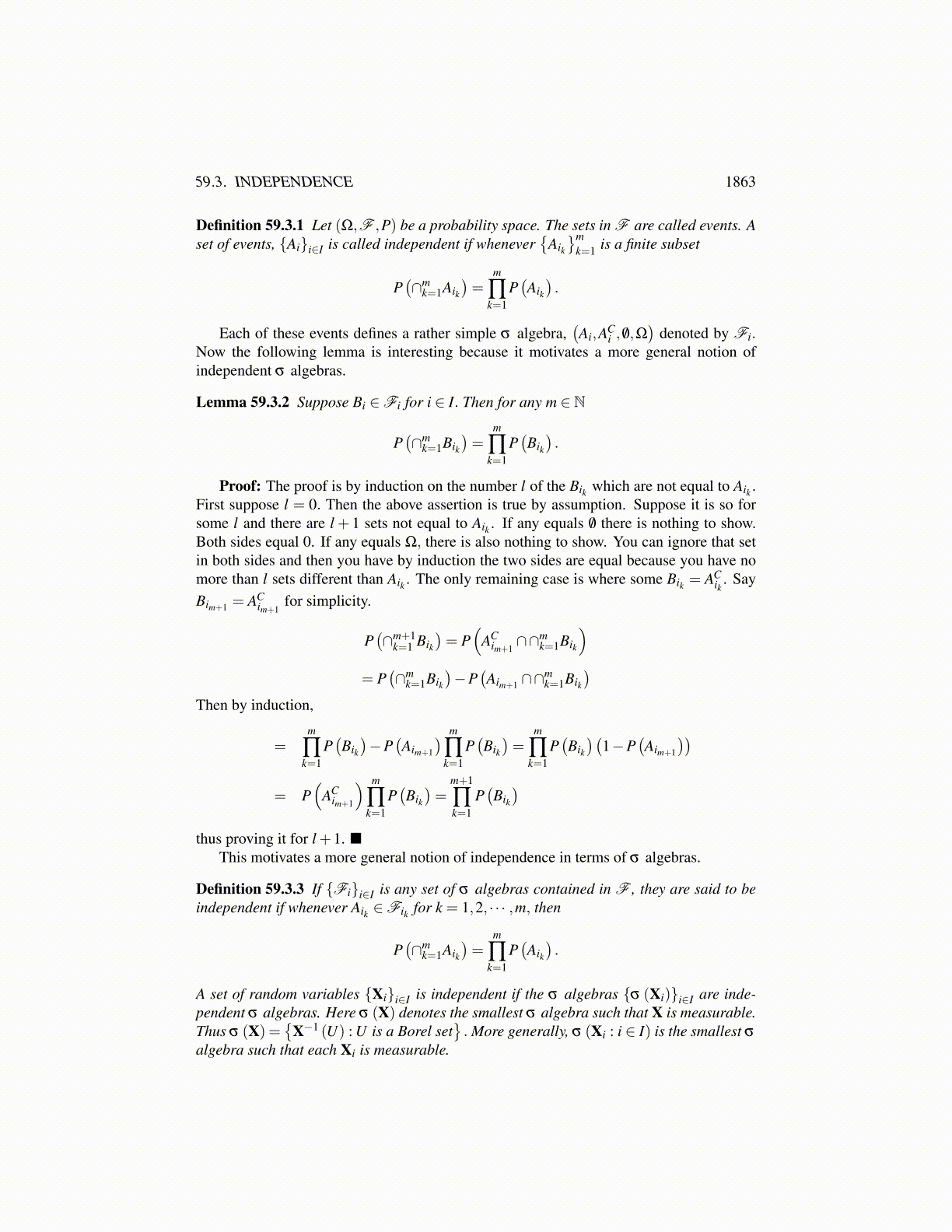
59.2. KOLMOGOROV EXTENSION THEOREM FOR POLISH SPACES 1863
Then P0 is well defined because of the consistency condition on the measures νJ . P0 isclearly finitely additive because the νJ are measures and one can pick J as large as desiredto include all t where there may be something other than Mt . Also, from the definition,
P0 (Ω)≡ P0
(∏t∈I
Mt
)= ν t1 (Mt1) = 1.
Next I will show P0 is a finite measure on E . After this it is only a matter of using theCaratheodory extension theorem to get the existence of the desired probability measure P.
Claim: Suppose En is in E and suppose En ↓ /0. Then P0 (En) ↓ 0.Proof of the claim: If not, there exists a sequence such that although En ↓ /0,P0 (En) ↓
ε > 0. Let En ∈ EJn . Thus it is a finite disjoint union of sets of RJn . By regularity of themeasures νJ , which follows from Lemmas 59.1.8 and 59.1.9, there exists a compact setKJn ⊆ En such that
νJn (πJn (KJn))+ε
2n+2 > νJn (πJn (En))
Thus
P0 (KJn)+ε
2n+2 ≡ νJn (πJn (KJn))+ε
2n+2
> νJn (πJn (En))≡ P0 (En)
The interesting thing about these KJn is: they have the finite intersection property. Here iswhy.
ε ≤ P0(∩m
k=1KJk
)+P0
(Em \∩m
k=1KJk
)≤ P0
(∩m
k=1KJk
)+P0
(∪m
k=1Ek \KJk
)< P0
(∩m
k=1KJk
)+
∞
∑k=1
ε
2k+2 < P0(∩m
k=1KJk
)+ ε/2,
and so P0(∩m
k=1KJk
)> ε/2. In considering all the En, there are countably many entries in
the product space which have something other than Mt in them. Say these are {t1, t2, · · ·} .Let pti be a point which is in the intersection of the ti components of the sets KJn . Thecompact sets in the ti position must have the finite intersection property also because if not,the sets KJn can’t have it. Thus there is such a point. As to the other positions, use theaxiom of choice to pick something in each of these. Thus the intersection of these KJn
contains a point which is contrary to En ↓ /0 because these sets are contained in the En.With the claim, it follows P0 is a measure on E . Here is why: If E = ∪∞
k=1Ek whereE,Ek ∈ E , then (E\∪n
k=1Ek) ↓ /0 and so
P0 (∪nk=1Ek)→ P0 (E) .
Hence if the Ek are disjoint, P0(∪n
k=1Ek)= ∑
nk=1 P0 (Ek)→ P0 (E) . Thus for disjoint Ek
having ∪kEk = E ∈ E ,
P0 (∪∞k=1Ek) =
∞
∑k=1
P0 (Ek) .